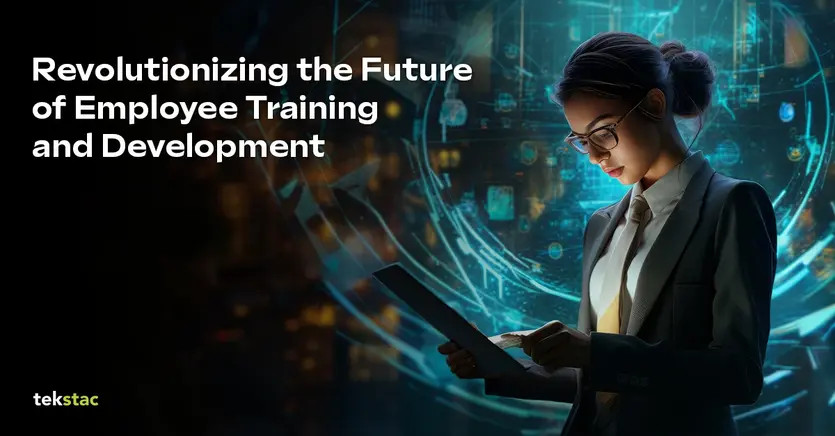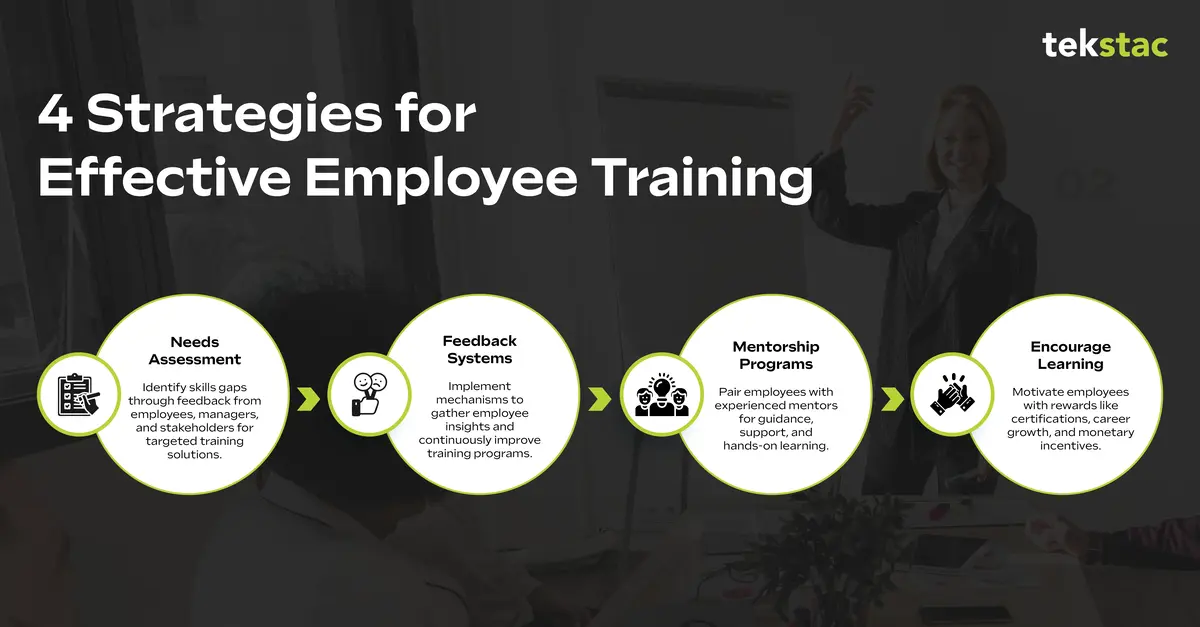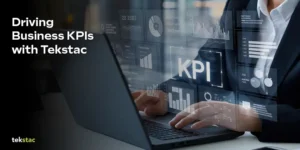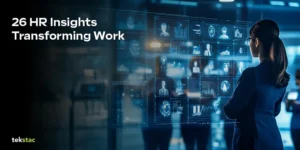Revolutionizing the Future of Employee Training and Development

Future Trends in Employee Training and Development
With the evolution of industries and the expansion of workplaces, come complex practices that have to do with learning and mastery. Employee training and development in the future is no longer only about acquiring new skills; it’s about promoting continuous learning that will help align personal growth opportunities with organizational objectives through new technologies.
“Employee training and development is critical to business success”
This blog delves into the future of workforce training and development on a macro level, breaking down emerging practices, technologies, and strategies influencing how organizations invest in human capital.
The Rise of Digital Learning Platforms

Out of all the transitions in employee training & development, nothing has had such a huge impact as shifting to digital platforms. Employees can gain access to various online resources, video tutorials, interactive simulations, etc., and they can do so anytime and from anywhere. Its built-in flexibility and accessibility allow employees to learn on their own time, which makes finding a balance between work and personal development much easier.
In addition, digital platforms allow companies to track employee training progress with learning management systems (LMS) and gain insights that can help leadership better understand knowledge retention and successful completion rates of their employees. This data-driven approach aids in tailoring future training programs to be more efficient and in accordance with the organization’s goals.
Want a smarter approach to employee training and development? Explore the latest Learning and Development Trends shaping 2025 and beyond.
Here are some key trends that are transforming the landscape.
- Personalized Learning Paths
- Microlearning: The Power of Bite-Sized Content
- Gamification: Makes Learning Engaging
1. Personalized Learning Paths
Over the next few years, personalized training programs will be more accurate. The one-size-fits-all, traditional model of training has been ineffective because every employee has different learning styles, career goals, and skill gaps. With the help of data analytics and artificial intelligence (AI), organizations can create and deploy personalized learning pathways, tailored to the specific needs of every employee on a larger scale.
“Personalized learning is the future of workforce development. It fosters skill alignment and better retention rates.” – Training Expert
Personalized learning ensures that employees are not wasting time on irrelevant content and instead concentrate on the learning path they need to follow to succeed in their respective roles. This approach results in higher engagement and effective learning outcomes, leading to a workforce containing more skilled employees solving bigger challenges.
Case Study: IBM saw a 40% reduction in training time by implementing microlearning strategies while improving knowledge retention among employees.
Did you know?
Some AI-driven learning platforms are experimenting with virtual “coaches” that take the form of characters like a wise wizard or a tough but fair superhero to guide employees through their learning journey.
2. Microlearning: The Power of Bite-Sized Content
Traditional training courses with long sessions are now being replaced by microlearning benefits, where training is delivered in small, focused doses. Microlearning typically consists of 5-10 minute modules, designed to tackle specific competencies.
This method suits present-day learners who want something flexible and portable, which also improves retention rates. Additionally, microlearning in corporate training solutions enables employees to learn new information even without detaching from their organizational tasks, meaning that learned skills can easily be applied to their tasks.
3. Gamification: Makes Learning Engaging
Gamified learning experiences are among the emerging trends in the area of training and personal development of employees. Organizations can incorporate features like scores, leaderboards, points, badges, and challenges into training activities to improve engagement and motivation among employees.
Consequently, employees are more inclined to attend and complete courses if the training appears fun and rewarding. Gamification enhances employee engagement through training and fosters a competitive but collaborative learning environment.
How Technology is Reshaping Employee Training and Development in 2025
Technology is at the forefront of the future of workplace learning strategies. Here are some ways in which technology is reshaping the learning landscape:
Learning Management Systems (LMS)
Present-day LMS for corporate training act as comprehensive platforms for managing and delivering training content. These systems include features like tracking progress, evaluation, and reporting, helping organizations monitor and evaluate employee development.
AI and Machine Learning
AI in employee training is one of the most influential trends reshaping workforce development. A study by Deloitte found that AI-driven training improves skill acquisition efficiency by 40%. AI-driven training solutions can analyze large datasets to determine skill gaps and create curriculum-based corporate training solutions. Moreover, they help build adaptive learning environments that change content based on learners’ performance in real time.
“Leveraging data analytics in training ensures that companies invest in what truly drives performance and growth.” – HR Analyst
E-Learning Platforms
AI-driven learning platforms make it easier for employees to access diverse online courses and resources. Many of these platforms include interactive simulations, quizzes, and video-based lessons, improving learning engagement.
Data Analytics
The importance of data analytics in training programs cannot be overstated. Organizations can make data-driven decisions to improve training strategies by analyzing employee performance, engagement levels, and feedback.
Proven Strategies to Strengthen Employee Training and Development Outcomes
For upskilling the workforce with digital training, organizations need to implement effective strategies that align with business objectives. Here are a few key strategies:

1. Needs Assessment
Conducting a thorough needs assessment is essential for pinpointing skill gaps and identifying employee training requirements. Gathering feedback from employees, managers, and stakeholders ensures corporate training solutions are relevant and effective.
2. Feedback Systems
Implementing consistent feedback mechanisms helps organizations refine training interventions and keep them aligned with employee expectations.
3. Mentorship Programs
Connecting employees with experienced professionals fosters guidance, support, and hands-on learning. Personalized training programs with mentorship can significantly boost workforce development.
4. Encourage Learning
To enhance employee engagement through training, organizations can offer rewards such as certifications, career advancement opportunities, or monetary bonuses.
Practical Takeaways for Organizations
Here are some steps organizations can follow to improve workforce development:
- Invest in AI-driven learning platforms to personalize training.
- Utilize gamified learning experiences to enhance employee motivation.
- Leverage microlearning benefits for better knowledge retention.
- Incorporate data analytics to track and optimize training programs.
- Offer LMS for corporate training to streamline learning management.
Conclusion
The future of employee training and development is dynamic and exciting. As technology continues to advance, organizations must stay ahead by embracing innovative workplace learning strategies. By investing in employee development and implementing effective training strategies, companies can build a skilled, adaptable, and motivated workforce ready to tackle the challenges of tomorrow.
Future of Training & Development FAQs:
1. What is employee training and development?
Employee training and development refers to the ongoing process of enhancing employees’ skills, knowledge, and competencies to help them perform their current roles effectively and prepare for future opportunities. This investment in their growth not only boosts individual performance but also contributes to a more engaged and capable workforce, driving the overall success of the organization.
2. How is technology changing employee training and development?
Technology is revolutionizing employee training through innovative methods such as e-learning platforms, virtual reality simulations, and mobile training applications, making learning more accessible, engaging, and tailored to individual needs.
3. Why is continuous learning important for employees?
Continuous learning helps employees stay updated with industry trends, adapt to new technologies, and develop new skills, ensuring they remain valuable assets to the organization and can contribute to its growth.
4. How can organizations measure the effectiveness of their training programs
Organizations can measure training effectiveness through various methods, such as assessing employee performance before and after training, gathering feedback from participants, and analyzing key performance indicators (KPIs) related to training outcomes.





